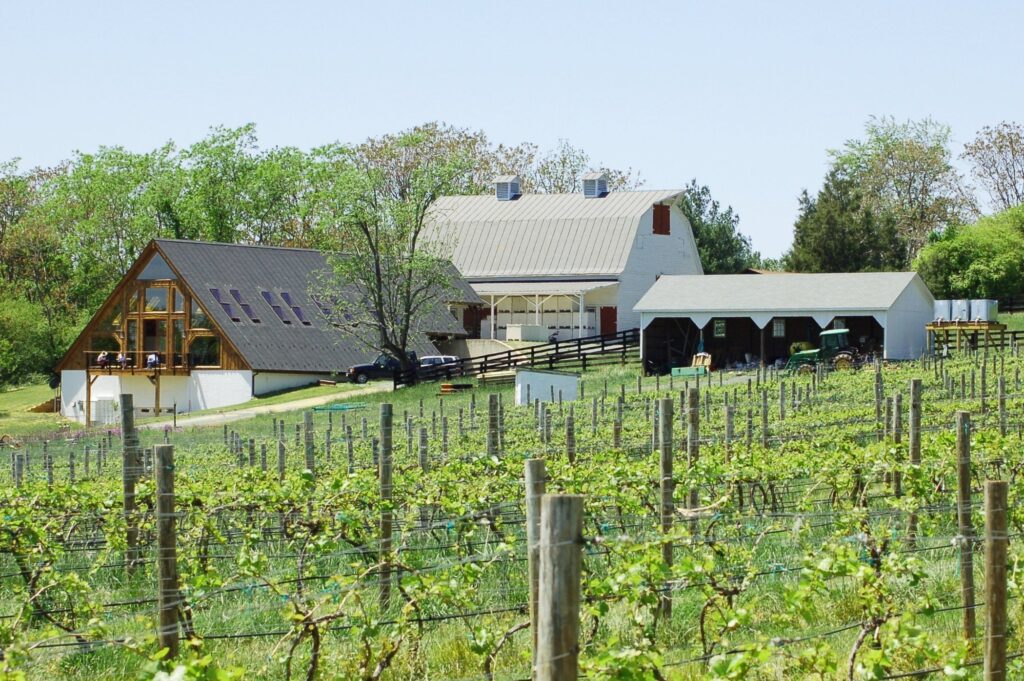
The Blenheim Story
For over ten years, Blenheim Vineyards has been crafting quality and sustainable 100% Virginia grown wines and managing 32 acres of estate vineyards. Our Blenheim, Claim, Deer Ridge, and Seaview Vineyards possess distinctive terroir and varying soils to reflect our wines place of origin.
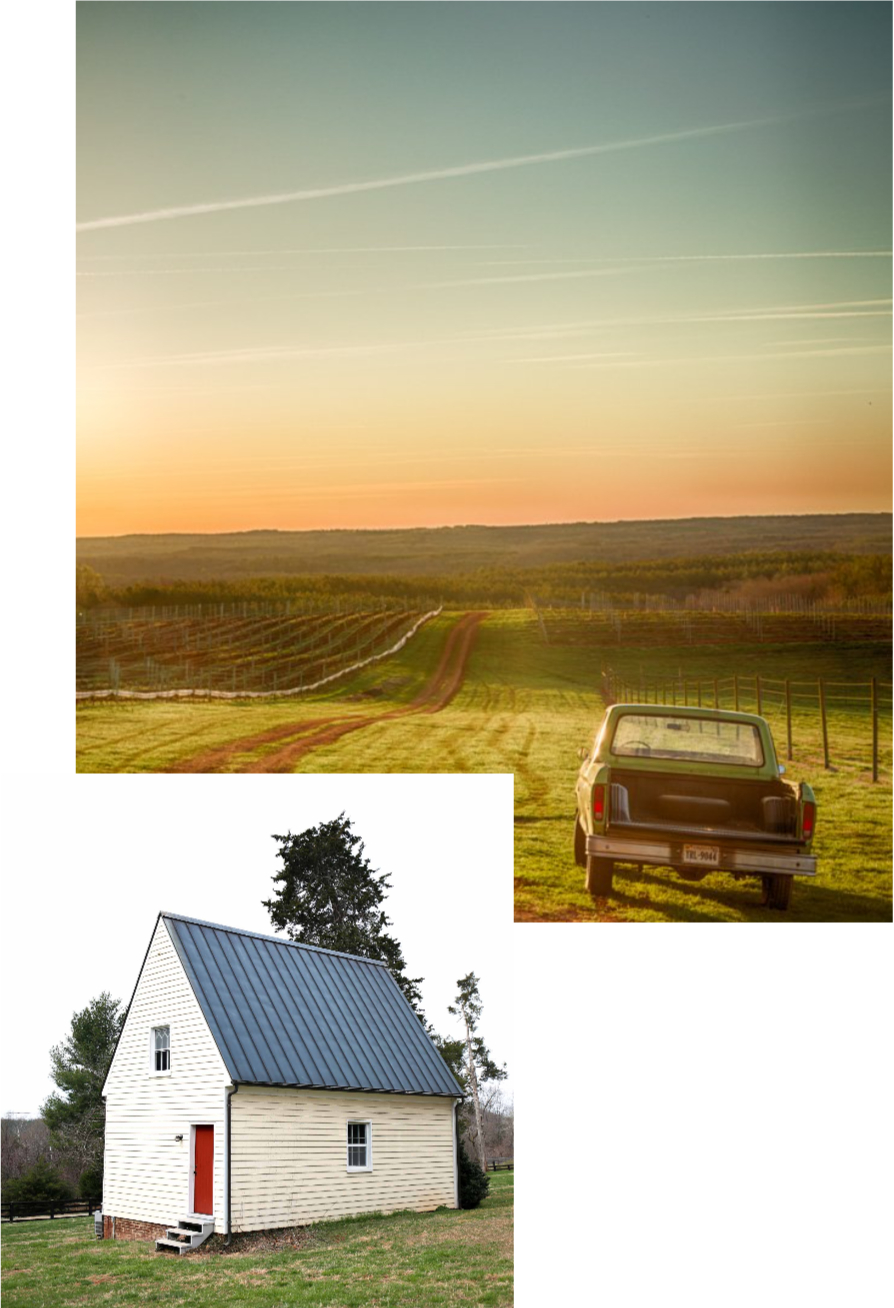
Our History
The history of Blenheim Farm dates back to 1730, when John Carter, Secretary of the Colony of Virginia and eldest son of Robert “King” Carter, obtained a patent for 9,350 acres northeast of present-day Carter’s Bridge in what is now Albemarle County. Here, John Carter maintained Carter’s Mill on the North Hardware River, and his son Edward built the first Blenheim house before 1799. The house, named in honor of the War of the Spanish Succession, was fought for and won by the British under command of the Duke of Marlborough.
It was at Blenheim where Thomas Jefferson and his bride, Martha, are said to have “rested and warmed themselves” after their coach stalled nearby during a snowstorm. Later, the Jeffersons continued to Monticello on horses borrowed from Edward Carter. The property was sold in 1840, and the house burned a few years later.
Andrew Stevenson (Congressman, Speaker of the House, Ambassador to Great Britain, and rector of the University of Virginia) purchased the property in 1846. He then built the current home as a one-story Gothic Revival-style cottage. The property also has an assortment of 18th and 19th-century outbuildings, including a school-chapel, smokehouse, pyramidal-roofed kitchen/laundry, and a library – all of which still stand today. The oldest house on the property – and potentially in all of Albemarle County – is the Claim House, which was built in the 1730s to secure or “claim” the original land grant.
Blenheim’s period of significance spans the 18th and 19th centuries. The property’s archaeological-historical, agricultural, and political/governmental associations are key points of relevance. The resource was nominated to the Virginia Landmarks Register on December 16, 1975, and to the National Register of Historic Places on May 17, 1976.
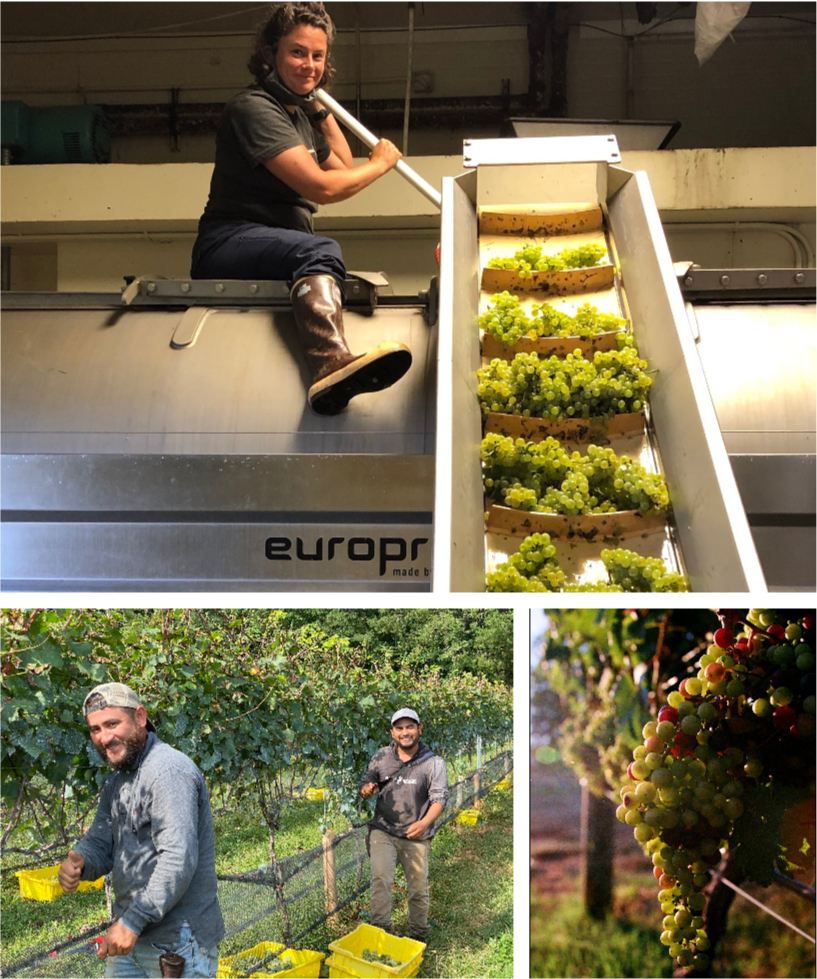
Our Process
We are minimalistic in our winemaking. We depend on growing beautiful, healthy fruit, and then we work hard in the winery to limit the amount of intervention we impose. Our wines lean more fruit forward and friendly for food pairings. Nothing stays in the barrel for more than a year, as our goal is to keep them approachable and drinkable when they are young.
For white wines, grapes are whole cluster pressed, then settled with Bentonite (a clay) overnight. Juice is then transferred to another tank, or barrels, allowed to warm up a bit, and then inoculated with yeast.
Fermentations take around two weeks. Once fermentation in tank is complete, the wine is racked off of heavy lees and into another tank. Stainless steel wines hang out for four to six months depending on variety and final wine destination. Barrel fermented wines are aged in barrel for four to ten months, and then blended just before bottling.
For red grapes, most are de-stemmed and then fermented in stainless steel tanks, or plastic macrobins. No cold soak or extended maceration is usually done. Fermentations are punched down twice daily, and then pressed once finished. Most red wines are transferred to barrels for aging after pressing, and allowed to age for six to ten months before bottling.
Our Team
Kirsty Harmon
General Manager & Winemaker
Manages and oversees the winery, tasting room, and vineyards, while also making the wines at Blenheim Vineyards since 2008.
Read more about Kirsty
Justin Bennett
tasting room manager
Manages and oversees the tasting room operations and Wine Club membership.
Tracey Love
Marketing & Wine Sales manager
Manages wine distribution in partnership with Williams Corner Wine and VWDC, social media and marketing, and winery events. Cofounded Oenoverse with Reggie Leonard in 2021.
Scott Wilcox
Operations manager
Manages and oversees the daily winery, vineyard, and property operations.
Sandy Robertson
Vineyard manager
Manages and oversees our estate vineyards and additional vineyard relationships. Oversees the vineyard crew and ensures quality and sustainability of the vineyards and land.
Los Jarochos
Vineyard Crew
A tight -knit group, “los Jarochos” as they call themselves, a reference to their homeland of Veracruz, Mexico, are the steadfast life-force of the vineyard, without whom none of this would be possible. The vast majority of the work of growing the grapes over the last 4 years is thanks to them.
Explore Our Vineyards
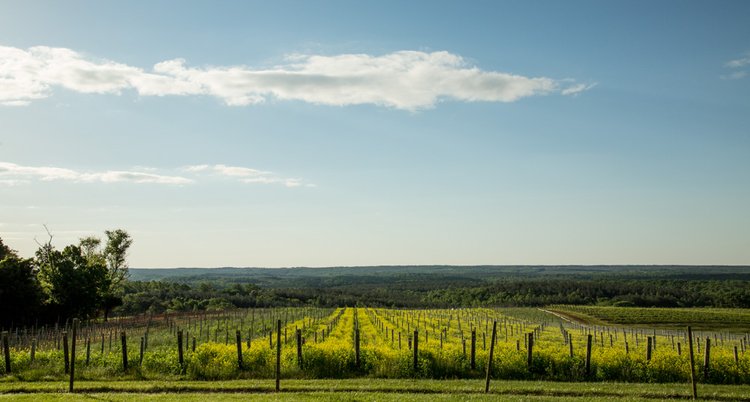
Sea View
This block contains the oldest vines in any block at Blenheim. 3 acres of Merlot, 3 acres of Pinot Noir and a small amount of Petit Verdot were planted in 2000 by the former owner of the property – Kluge Estate. Blenheim acquired this part of the property in 2011 and then expanded the vineyard to 15 acres with the addition of Albarino, Sauvignon Blanc, Roussanne, Chardonnay, Garganega, Cabernet Franc and a little more Merlot.
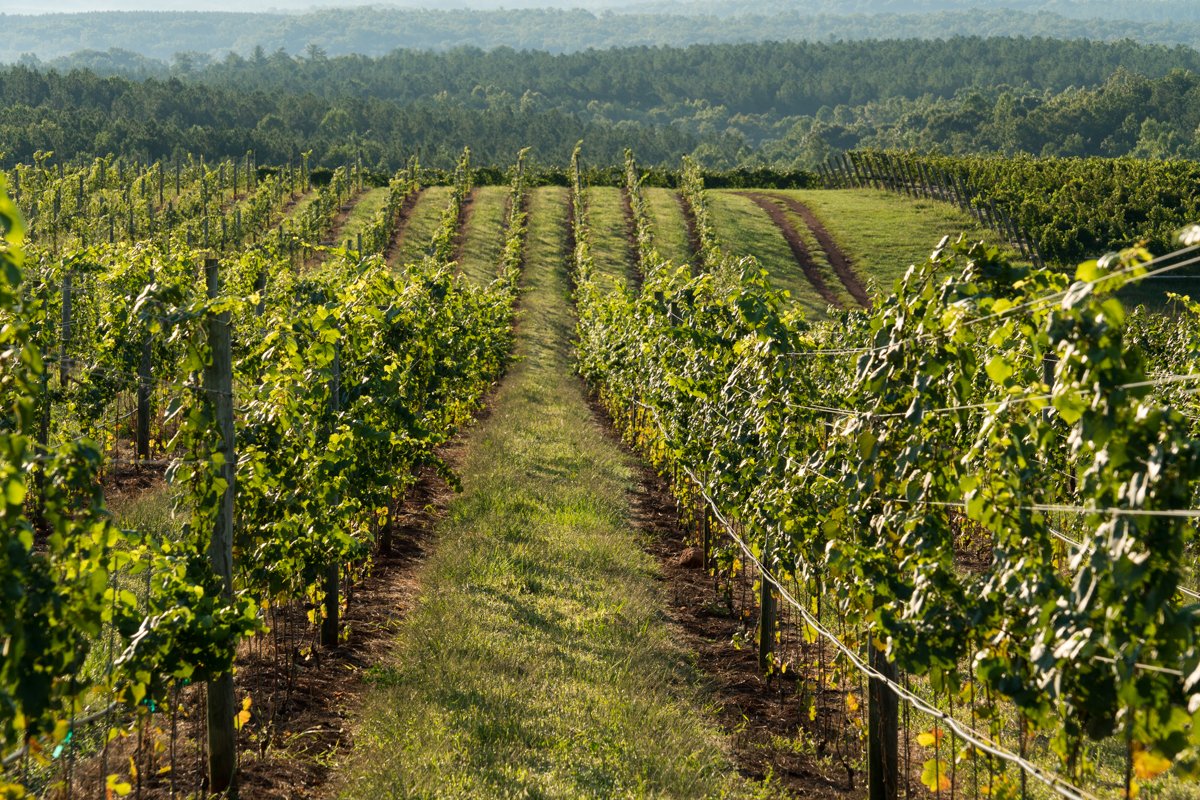
Blenheim Farm
Originally planted in 1999, and re-planted in 2017, Blenheim Farm block is 5 acres and is planted with Chardonnay, Viognier, Gruner Veltliner and one single row of Pinot noir. This block is the one that you see on the left as you look out of the tasting room windows, and was theoriginal 5 acres planted at Blenheim.
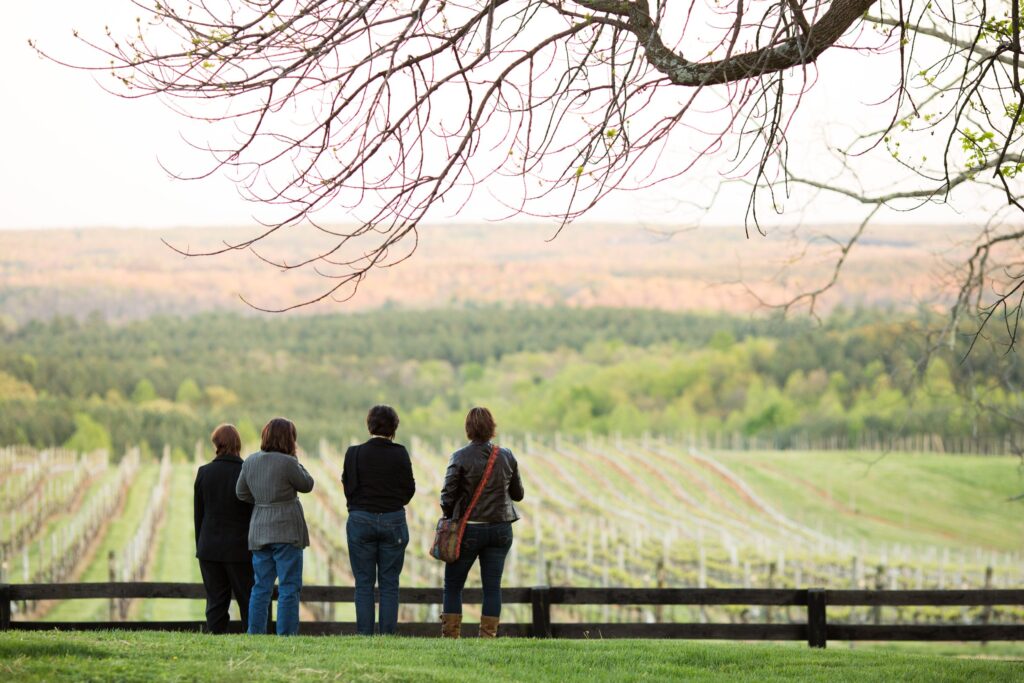
Claim
Named after the Claim House that sits atop the vineyard, this block is 5 acres and was planted in 2006 with Viognier, Cabernet Sauvignon and Petit Verdot. This block is the one that you see on the left side of Blenheim Road as you approach the winery entrance. Five acres in total and rows run east to west.
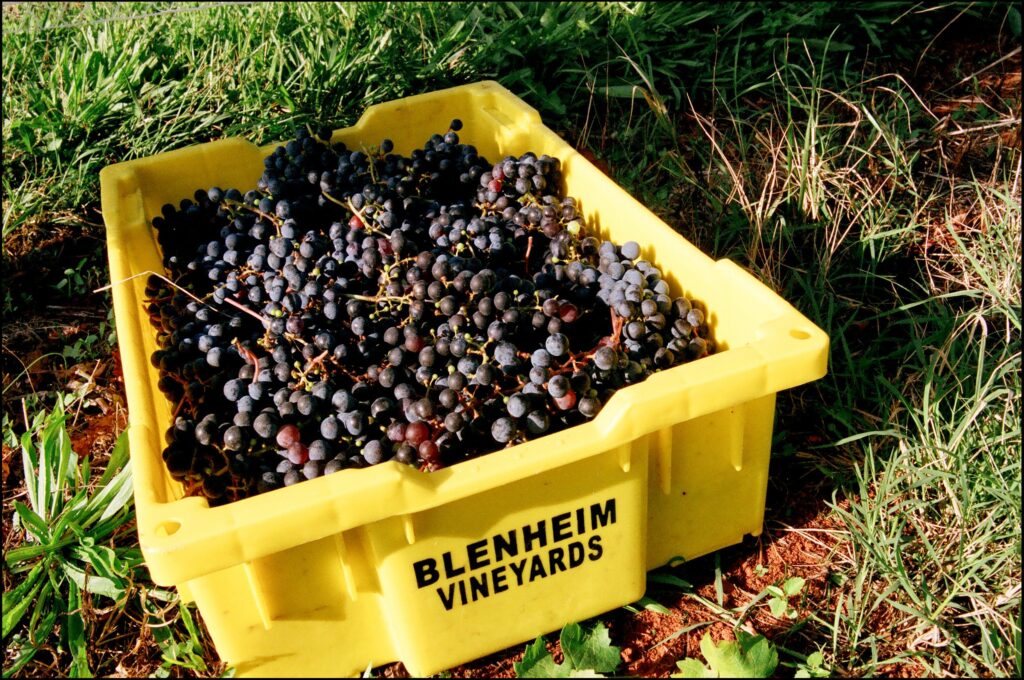
Deer Ridge
Planted in 2015 and 2016, this block is just beyond what you can see from the tasting room window. It is 5.75 acres and is planted with Sauvignon blanc, Chardonnay, Grenache, Mencia (2020) and Cabernet Franc. Some of the varieties planted here – Grenache and Mencia – are somewhat unusual for Virginia.

